MICROSCOPE-ANTIQUES.COM © 2013-21.
SIDLE SLIDE-RINGING TURNTABLE
1880
MODEL: The CONGRESS
Author: Barry Sobel, MD
Editor: Joseph Zeligs, MD
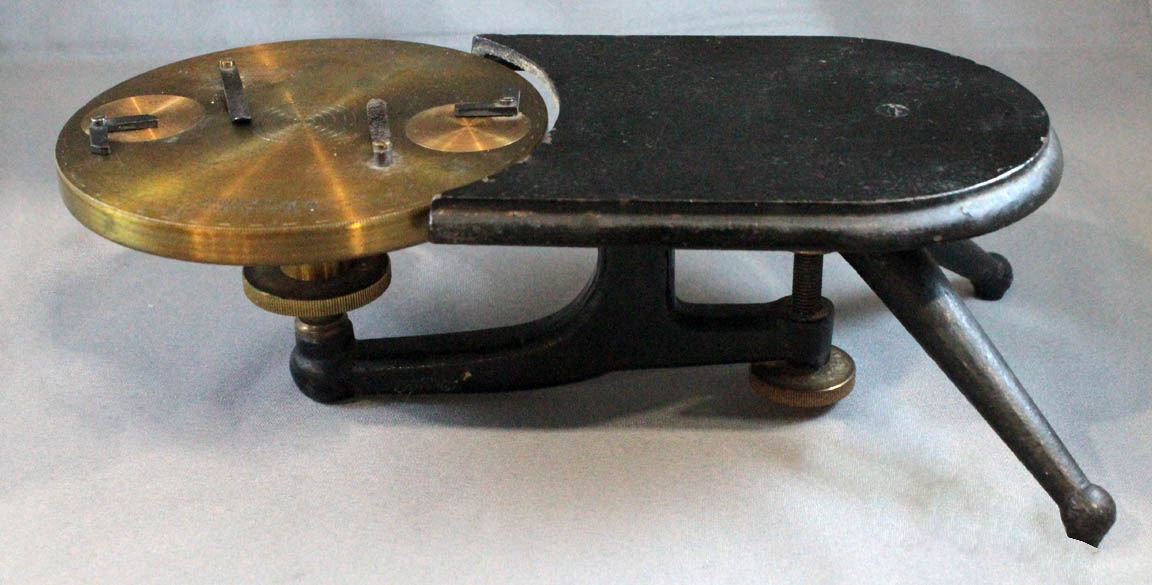
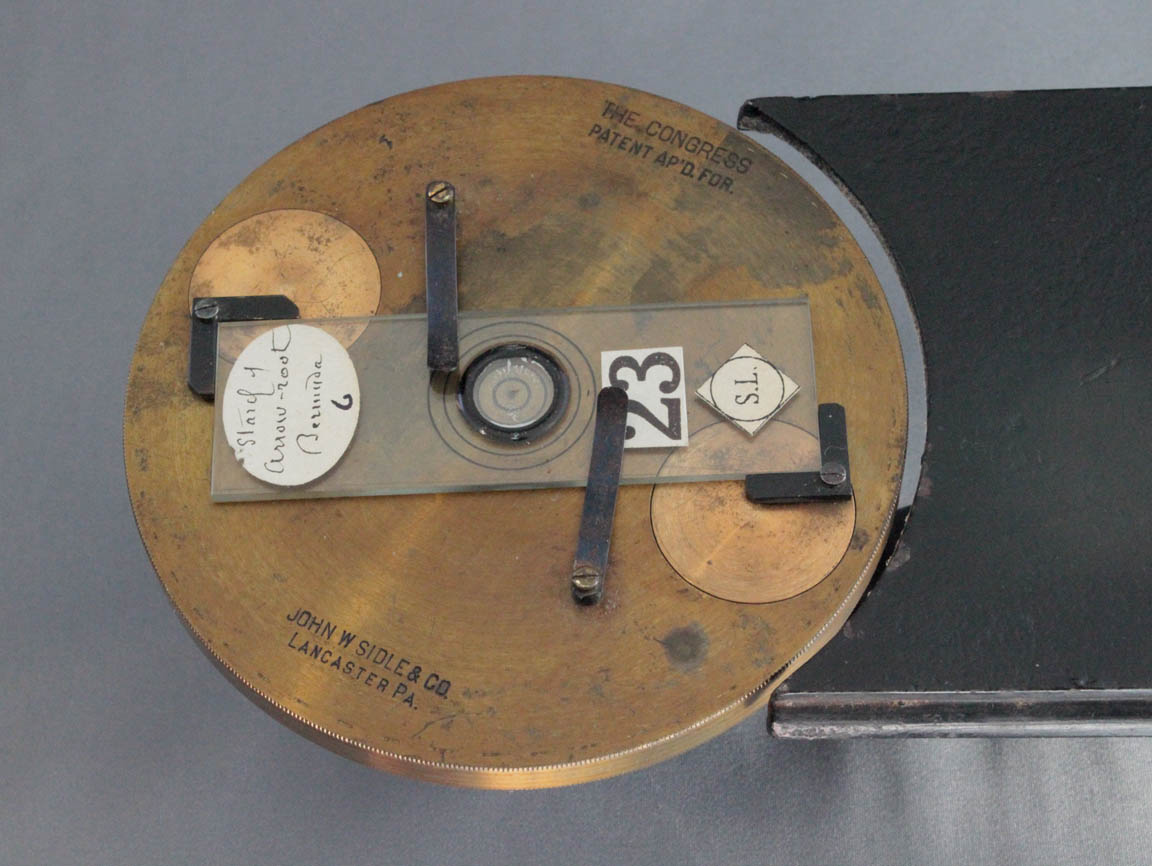

Signed on the brass turntable itself: 'JOHN W. SIDLE & CO, LANCASTER PA' and also 'THE CONGRESS, PATENT AP'D FOR'. The device has two brass stage clips, and two L-shaped slide retainers to grasp diagonally opposite corners of a slide.
Concentric rings are engraved on the table to assist in centering. Each of the two L-shaped slide holders attach to a disk at opposite sides of the table. These disks are rotated simultaneously in opposite directions of rotation by a control knob underneath. In this manner, the slide holders either both move towards or away from the center of the table, maintaining the centering of the slide, regardless of its length.
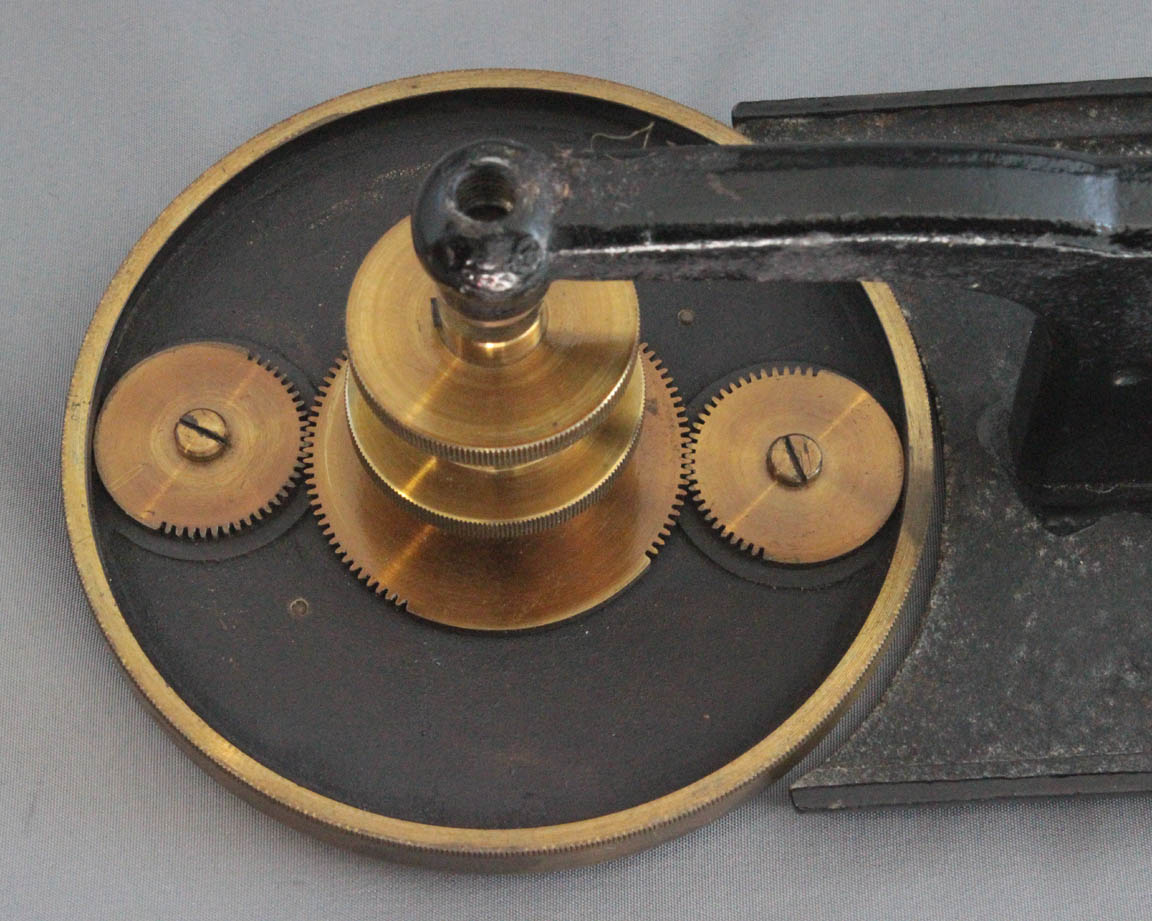
Each of the brass disks have teeth machined into their curved edges. As the control knob is turned counterclockwise, and one holds the top stationary, the center gear, engages both L-shaped pieces and moves them towards the center of the table equally.
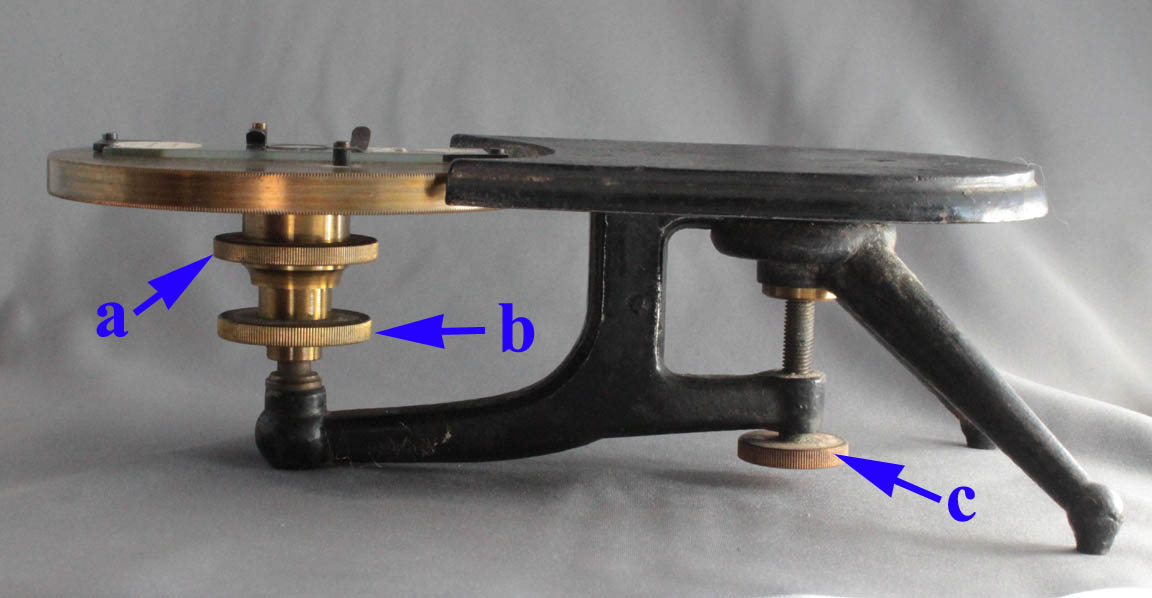
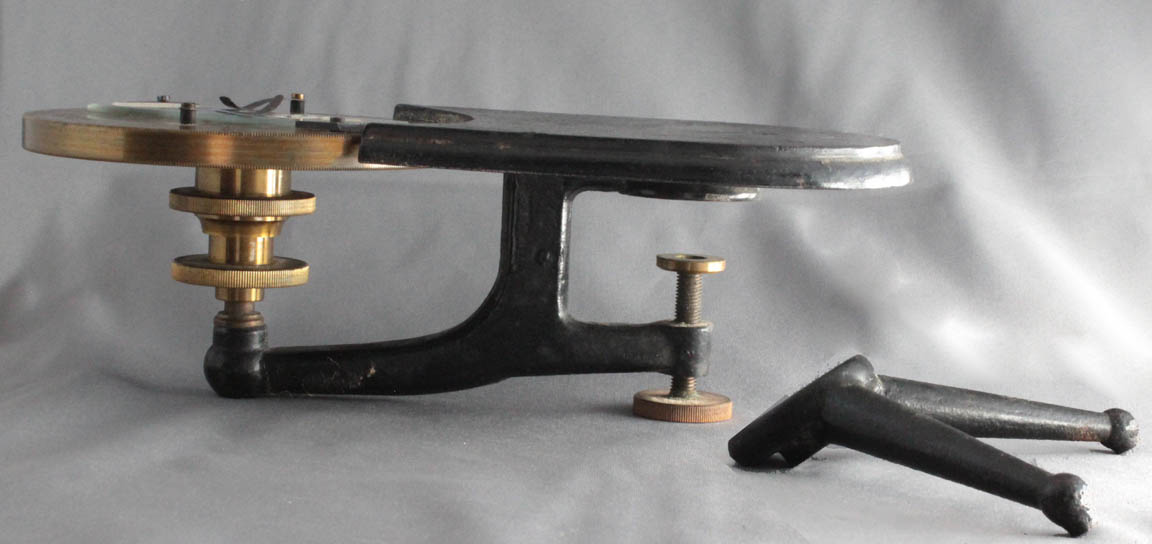
Under the top there is a knob(a) which controls the gear which engages the two disks to adjust the distance between the two L-shaped pieces. The knob b is used to spin the turntable. Knob c holds the main part of the device and the two rear legs together; when this is loosened and the rear legs removed, the device can be directly clamped to a table edge for added stability.
Although it works smoothly, the Sidle turntable has one small disadvantage over Bulloch's. Because the L-shaped pieces are moved closer or further by rotating on disks, the direction the L-shaped piece is facing changes as the disk is rotated. Therefore, one is forced to change the direction of these L-shaped pieces manually as they are swung around the disks so they are still oriented in a direction in which the corners of the slide fit properly inside the L-shaped pieces. In Bulloch's arrangment, because the pieces ride in a straight line, this is not neccesary.
HISTORY AND USAGE OF SLIDE RINGING TURNTABLES:
Sidle's patent for his Turn Table for Mounting Microscopic Objects
was issued on November 30, 1880. Since this example is signed with Patent Applied for
, one can surmise this was produced before the patent date, but in 1880 when Sidle and Poalk became Sidle & Co.
For a review of how turntables are used, see the the Bulloch Turntable page.
For a review of the history of slide-ringing turntables, and other variations, see the discussion on the Aylward Turntable page.





